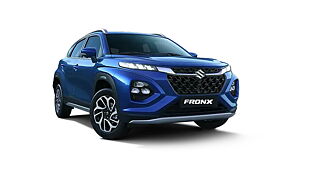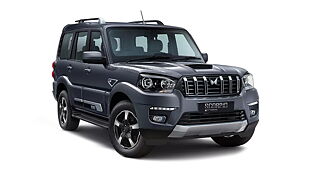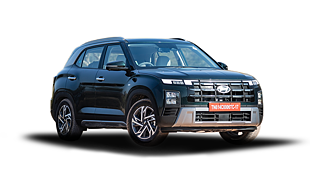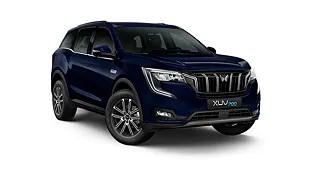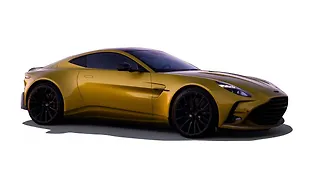Introduction

Ford began its real innings in India just over a decade ago with its Ikon, which was launched in the last quarter of 1999. (We’re not counting the Escort here, which was a product of the JV between Ford and Mahindra in the mid-nineties.) The Ikon was one of the first Ford’s ‘for’ India designs, as it took the car it was based on (the face-lifted Fiesta Mark IV) and was re-engineered with a boot and featured a few other small changes to make it more suitable for the Indian market. The Ikon had many unique-to-segment features back then, like the rear door which opened at a wide-angle, a spacious rear seat, a dedicated air-con vent directing air to the rear of the car and loads of boot space. Ford, even back then, understood the Indian consumer better and knew that India was a unique market when compared to the other markets they were present in.
In the years that followed, Ford went on to launch the Fusion, Endeavour, Fiesta and now we have the much awaited hatchback from Ford - the Figo. The Figo, as we all know is a car specifically made in India for the Indian and a world-audience. The Figo is based on the ‘B’ platform of cars which is Ford’s new generation platform for small to mid-size cars around the world. Though the Figo has been engineered out of India and has been launched here first, it would be interesting for you to know that as many as 75 countries have shown interest in picking up Figo for their markets. These are mostly the Caribbean countries, Africa and smaller countries with similar size economy to ours.
The Figo concept car (just the exterior) was unveiled to the world at large, last September under the One Ford programme which basically unified all of Ford’s engineering R&D activities to build cars for the global market place. Ford wasn’t kidding when they told us that the ‘One Ford’ programme was big and really focused on developing cars around the world by pooling the best of talent and resources, which not only cuts down on development time and cost, but also makes for more ‘global’ products. This gives the company great strength in developing cars for a variety of regions and countries and there is no longer a need of re-adapting a car for a particular market.
Ford also reinforced its investment in India last year by pumping in around USD 500million in its Maraimalainagar plant outside of Chennai. They have also set up a new engine plant with a flex-line from where they can manufacture anything like the new 1.2 Duratec engine that you will see in the Figo to the 1.4 Dura Torq which runs in the Fiesta, Fusion and now in the Figo. The plant, we are told, will also be capable of manufacturing the 1.2 EcoBoost engine which will make presence in the upcoming Ford Focus which will be launched in 2011-2012. Ford is also working on launching a new super small engine with turbo charging and new features which probably use the EcoBoost technology for even more efficient small size engines. Ford is serious on the Indian small car segment and the Figo is the first-in-line to reinforce Ford’s commitment to the Indian consumer.
Design

The Figo may not be as exciting to look at when compared to the other recent launches like the Chevy Beat or the Hyundai i20 with sharper more dynamic styling. Its direct competition, the Suzuki Swift is looking slightly dated now and no doubt, the Figo would be looking into eating into a fair chunk of this market. It would also compete with the Tata Indica Quadrajet, the Ritz, i10, the Punto and most notably the top end Chevy Beat. There’s interesting new premium German competition too in the form of the VW Polo. But the Figo does have a few tricks up its sleeve. To start with, it’s a very cleverly designed car. Its proportions are quite neat with a short front and rear overhang. The car has also got the maximum wheel base – 2489mm, compared to its competitor Maruti Swift (2390mm), Maruti Ritz (2360mm), Hyundai i10 (2380mm) and Chevrolet Beat (2375mm). So since the Figo has the longest wheelbase, it means that there will be that much more space on the inside. And although it has a tapering roofline, a six-footer will be quite comfortable sitting at the rear with headroom to spare. Interestingly, the boot also has enough space (around 300 litres), though this fact isn’t noticeable from the outside. It’s really good enough to swallow suitcases and bags for an over-packed weekend trip.
The first time we saw the Figo it was almost like Ikon meets Fusion! The Figo really does looks like a slightly watered down version of the Fusion in terms of its styling and design proportions, but that’s not a bad thing as Ford always have had a family look about their cars – be it the front or the rear end. The Figo in that sense has truly retained the Ford styling DNA and added on some of their new design language – kinetic design, which is now really evident on their newer more dynamically styled cars, most notably their new Fiesta (in Europe) and the Focus. And let’s not forget the Ford Taurus SHO which was launched last year in the American market with that delectable EcoBoost engine. Ford’s Kinetic design philosophy not only ensures that the cars look more stylish but also pack in plenty of practicality. It also ensures that all their designs carry the Ford design DNA and age slowly and gracefully, rather than be out of style just a couple of years down the line. The ‘little’ Ford looks a little understated – it’s not a very sharply styled car, but it is a more mature design which no doubt, will appeal to a wide audience. The side-view mirrors and the door handles seem to have come from the Fiesta parts bin, as have the wheel trims. We love the way the lights flow just slightly atop the bonnet line into the fenders, giving the car an almost feline raised-eyebrow look. The flying-bullet line (first seen on the Taurus) ends with the rather-stylized side-indicators. We also love the way the rear windscreen merges seamlessly with the design of the rear tail-lamp, giving a seamless (very C-Max like) look to the rear end.
The Figo development programme has a rather interesting story and the central character, who Ford have called ‘Sandeep’, has had quite a pivotal role in the entire process. Sandeep is supposed to personify an individual (the young Indian consumer and Ford’s target audience) who is newly married, has firmly rooted family values and stays with his parents. He is successful at work and has a place of his own to live in. So, obviously, next in the hierarchy of all things material is the big luxury purchase – a car. Now knowing Sandeep, he would want a car that is stylish enough, that is functional, practical and at the same time to be liked by the whole family but yet he wants something which has status and plenty of aspirational value. Sandeep is a guy who loves to buy branded stuff but he looks first for that all important value-for-money proposition in any of his purchases. So while he is aspirational, he is still value conscious. He also wants a car that is economical to buy and run and that is an area that Ford has been working on – reducing ownership and maintenance costs.
Interiors

We’re going to forget for a moment about the comfortable front seats and the smartly sculpted dashboard which really does free up space in the car and go straight to the rear seat. Remember, Sandeep’s family would have to be comfortable too! So, in terms of the rear seat space, the Figo is comfortable for any six-footer, and we were quite pleasantly surprised . There are a couple of minor issues which need improvement and one of them is that the Figo doesn’t have adjustable headrests at the rear. We also found that the rear seat belt does tend to chaff your neck and maybe this has something to do with the position and the angle of the seatbelt. We did speak to the Ford R&D team about this rather peculiar problem and it remains to be seen whether these issues will be resolved.
The Figo is available in four trim levels. There is the bare-bones LXI, the mid-level EXI, the loaded ZXI and the Titanium which is the variant with all the bells, whistles and safety (since it has Airbags and ABS). The ZXI and the Titanium variants are available with ‘Coral’ interiors. This means you get a dashboard bathed in a reddish-brown, plenty of silver accents on the centre console and the door handles and a slightly different interior fabric which has also got red in it. The overall effect isn’t too bad. It is quite strikingly different, but somehow I don’t really see falling head over heels with the Coral interior. That said, the one colour that really complements this interior scheme is the Metallic Grey exterior. The whole car looks really colour co-ordinated and looks the best with the ‘Coral’ interiors, since the red bits do add just that right element of contrast between the grey paint and the dark interiors.
Ford has also really worked on choosing the seat fabric across trim levels. They are a good quality, hard-wearing material which means they will withstand a decent amount of abuse and will last through the years. The other nice thing about the Figo (and we do love this!) is that they have an all black and grey interior (except the red bits on the ‘Coral’ trim) and will not get as dirty as a beige interior might. Overall, the plastic finish is fairly good as is the fit. Most plastics and interior bits are hard to the touch which means they won’t really give the insides a slightly more upmarket feel which soft-feel plastics could have.
The fully-equipped Figo’s that we drove came with front power windows, keyless-entry with tailgate release on the remote itself. They also were equipped with a stereo system which sported an Auxiliary-In, MP3 / CD, Bluetooth and USB connectivity in addition to a radio. The good thing about this factory fitted system is that it integrates well with the dashboard and has the same colour of lighting as the instrument cluster carries, giving the car a more unified feel on the inside. The dials are reddish in colour too and the layout we are told comes from a motorcycle cluster. The tachometer is on the left, the speedometer in the centre and a little digital display on the right giving you the trip meter and a distance to empty indicator, which means if you are running low on fuel and you have just 80kms of fuel left with, the car will constantly remind you that you just have 80kms of fuel left and you need to tank up immediately! The dials are extremely legible and the red lighting – from the stereo, knobs and buttons gels really well with the coral interior.
Ford has seven colours on offer with the Figo. They have the standard White, Black and Silver. However the exciting colour for the Figo is Squeeze (see pictures) which is a lime green colour which looks really young and quite trendy. There’s a more sober Chill (a champagne gold) and a Grey which looks absolutely fantastic. They also have a bright solid red called the Colorado red. You can’t however get the Colorado red paint with a Coral interior. One of the things that Figo does not come with is rear power windows. It has the usual manual wind-down fare. It also doesn’t come with an adjustable steering – neither for tilt or reach. Alloy wheels aren’t available at the moment even on the Titanium trim, although we do hope that the company adds that in the option package at some stage. Some of the cars we drove didn’t have fog lamps on what seemed to be a full-spec car but since we all were driving what Ford likes to call ‘Job Ones’, there were some bits and pieces that were different on different cars. The Figo’s we drove came with electrically adjustable side-view mirrors with a very conveniently located control stalk. Being typically European, the headlamp switch is on the right hand side of the dashboard with the wiper control on the right hand stalk, with the left one being for the indicators and main beam. The indicators have a useful lane change feature, where a gentle tap will make the indicators flash thrice.
The top end version (Titanium) comes with an airbag for the driver and the passenger and also has got load sensing seatbelt reels apart from the anti-submarine seats. Other small touches that make the Figo so much more practical are the doorpads which can hold a 1-litre bottle (it even has a small marking which says 1-litre!), storage space on the console where you can put your cellular phone or a cup, and some storage space immediately behind the parking brake for some odd bits you’d want to stow. The glove box is fairly large too, and will comfortably accommodate lots of the knick knacks.
Powertrain

The Ford Figo comes with two engines – a 1.2litre DuraTec petrol which is all aluminium (both the block and the head are aluminium alloy). This 1196cc, four-cylinder, 16V DOHC engine produces 70bhp at 6,250prm and 102nm of torque at 4,000rpm. Although, 70bhp doesn’t sound so much on a sheet of paper, it is plenty when you get behind the wheel of the Figo. The engine packs in a fair bit of punch, helped no doubt by the Sequential Fuel Injection system. And then there’s that really sweet sound from the exhaust upwards of 4,500rpm. We’re normally quite fond of diesel engines, but this is one gem of a petrol engine. That said, the 1.2 litre engine is little down on the torque, and you do feel this especially when in the 2nd or 3rd gear and most Indian drivers are bound to lug the car in these gears in traffic. Keep the car between 3000 and 5000rpm, and you’ll get the best out of the engine and this is one car that really likes to be not just driven, but driven hard.
The other engine, the DuraTorq – is a 1.4litre unit. This 1399cc, four-cylinder, 8V SOHC engine makes all of 68bhp at 4,000rpm and a very useful 160nm of torque at 2,000rpm. This is the same common-rail diesel engine which does duty under the hood of the Fiesta, Fusion and the Ikon, so we all know that this lightweight unit is a fairly reliable, robust powerplant and is more than enough for your regular and highway commuting needs. This engine is also known for its economy and we have a feeling this is the engine that most people buying the Figo just might go for. It just has so much torque, that you can be in two gears higher than you should and the engine will just shrug its shoulders and carry on doing its job without a hint of feeling stressed.
Both the petrol and the diesel engines are mated to the very popular IB5 gearbox. This world-class gearbox which is common across the ‘B’ platform is an extremely quick shifting, slick and precise gearbox. It’s a total joy to use and it’s just one of those gearboxes you’d know you wouldn’t mind doing countless gear-shifts through the day.
Driving Dynamics

The Figo is quite sprightly off its feet and feels really nimble. As expected of a Ford, the Figo rides and handles flawlessly for a car of this size. Though the ride may not be as complaint as you might want through the potholes and ruts, you’ll never get jarred on the inside. The handling is absolutely squat and flat through any corner you throw at it and you can really push the Figo around a bend so much quicker than you’d think was possible with a mundane hatch. We weren’t able to get a proper overall feel of the Figo because we driving through the crowded bylanes of Goa but the 50km stretch was more than enough to tell us that it is very grown up on the ride and handling front. Ford claim that the Figo in petrol guise does 0-100kmph in about 15.5 seconds while the diesel variant clocks the 0-100kmph run in 15.8 seconds. We'd reckon both the petrol and the diesel will top out between 160 - 170kmph. We’ll put our figures up once we’ve tested it for performance and economy. Expect 11 – 13kmpl for the petrol and 15 – 17kmpl for the diesel under regular driving conditions.
The steering is superbly weighted and whether high speeds or low speeds, the steering always felt just perfect and dead accurate. None of the trim levels have an alloy wheel option and they all run on 175/65/R14 rubber shod on steel wheels. The cars that we were driving had Goodyear GT 3’s on it and this just goes to show that Ford isn’t cutting corners when it comes to something this important. Ford understands the need of good tyres and it is in the Ford genes not to compromise on vehicle dynamics.
The car has very low NVH levels (Noise, Vibration and Harshness) and this is something that the engineers have been working really hard at, so it’s seen many hours in the testing lab. The car is very quiet on the inside and there’s hardly any vibration that filters from the engine into the cabin. Another thing which the Ford engineers have worked on apart from the vehicle dynamics and all the suspension tests they did in India is the HVAC. Now, they have been testing over close to a 136 prototypes and one of the things they really worked on is the air-conditioning. The result of all this is that the Figo runs a much larger air-con compressor and it has also been designed to deliver best in class cooling. This is critical since you have better comfort levels in the car much faster making for a better driving experience. Also helping cool the cabin quicker is the round air-conditioning vents which are capable of throwing a more focussed mass of cold air and they help in cooling the car much faster. Even in the hot and humid Goa climate, the car did cool fairly rapidly.
Overall Evaluation

With the Figo production having begun on the 5th of February and the car now in showrooms for prospective Sandeep’s to see, the Figo is really an important car for Ford in India. They even inaugurated 28 new authorised Ford dealer facilities in 24 cities on the same day! Ford now has a total of 164 facilities located in 97 cities across India that can sell and service a Ford vehicle and is taking the brand that much closer to the prospective customer. On the value for money and ownership aspects, Ford has also been talking to its dealers to provide better service (Quick Service Centres) and they are also working towards reducing the cost of spares as well as engineering parts that last a lot longer in the car. For example, if you’d have to replace a part at 60,000km in any other hatchback, in the Figo you would probably have to replace it at 120,000km, which means that you will actually be spending less money per kilometre on parts replacement.
Essentially, the Figo could just be that game changer for Ford and could really help Ford’s fortunes. We were worried about what Ford would price it at, but sources tell us that Ford has really listened to the Sandeep’s of the world and have priced it incredibly well. The base version petrol (LXI) we are told, begins at 3.65 Lakhs (Ex-showroom Delhi) and 4.55 Lakhs gets you the Titanium spec petrol. The diesel LXI starts at 4.50 Lakhs (Ex-showroom Delhi) and tops out at 5.50 Lakhs for the Titanium spec diesel. The Ford really does have so much in its favour and it’s possibly one of the most sensible purchases in the segment today. We just hope Ford dealers don’t let the company down, and deliver quality service and an ownership experience that this important new car from Ford truly deserves.
Test Data
Engine Specifications
View specifications
Speedo Error
|
Max in Gear
| Gear | Speed (kph@rpm) |
|---|---|
| 1st | 46.7@6600 |
| 2nd | 86.6@6600 |
| 3rd | 127.2@6600 |
| 4th | 156.2@5600 |
| 5th | |
| 6th | - |
Performance Test Data
| Top Speed | 156.2kph |
|---|---|
| 0-60kph | 6.3secs |
| 0-100kph | 16secs |
| Quarter Mile (402m) | 20secs@110.5kph |
| Braking 80-0kph | 36.8m |
| 30-50kph in 3rd | 5.7secs |
| 30-50kph in 4th | 11.6secs |
| 50-70kph in 5th | 13.3secs |
Fuel Efficiency
| City | Highway | Overall | Worst | |
|---|---|---|---|---|
| Mileage (kpl) | 11 |
Test Data
Engine Specifications
Figo Diesel View specifications
Speedo Error
|
Max in Gear
| Gear | Speed (kph@rpm) |
|---|---|
| 1st | 35.6@4600 |
| 2nd | 70.9@4600 |
| 3rd | 105.6@4600 |
| 4th | 136.4@4600 |
| 5th | 161.2@3700 |
| 6th | - |
Performance Test Data
| Top Speed | 161.2kph |
|---|---|
| 0-60kph | 6.3secs |
| 0-100kph | 16.7secs |
| Quarter Mile (402m) | 20.2secs@107.1kph |
| Braking 80-0kph | 33.3m |
| 30-50kph in 3rd | 4.7secs |
| 30-50kph in 4th | 9.3secs |
| 50-70kph in 5th | 10.2secs |
Fuel Efficiency
| City | Highway | Overall | Worst | |
|---|---|---|---|---|
| Mileage (kpl) | 14.65 |
![Ford Figo [2012-2015] Image Ford Figo [2012-2015] Image](https://imgd.aeplcdn.com/272x153/cw/cars/discontinued/ford/figo.jpg?q=80)

